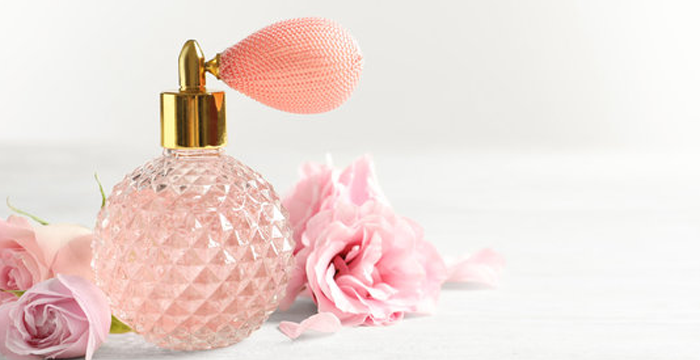Sarees Splendor: Celebrating the Richness of Indian Heritage
India has diverse traditions and cultures, each characterized by its unique clothing style. Among them, sarees stand out as a timeless symbol of grace, elegance and the country's rich heritage. Sarees have evolved, with their roots dating back thousands of years, but there is no change in their essence.
Let’s delve into the world of saree splendour and explore the richness and significance of this iconic outfit.
History of sarees
The roots of sarees are from Indus Valley Civilization, dating back to 2800 – 1800 BCE. Originally sarees was a simple piece of cloth draped around the body, but gradually, it evolved into more styles and sophisticated garments.
By now, sarees have undergone multiple transformations and are influenced by various rulers, dynasties and cultural exchanges. The Mughal era brought luxurious fabrics and intricate embroideries, and the British colonial period introduced designs and materials.
The art of weaving sarees
The most remarkable aspect of sarees is the area of weaving that goes into its creation. India is home to many handloom traditions, each with its own distinctive technique and style. Every region, from Kanjivarams to Banarasi silk sarees, shows unique weaving patterns, craftsmanship and motifs.
Sarees weavers across India work tirelessly to create exquisite sarees using traditional techniques passed down through generations. These skilled artisans also employ multiple tools and looms and ensure that each saree is a masterpiece of skill and artistry.
Regional variations in sarees
India's huge cultural and geographical diversity has given rise to various regional saree variations. Some most prominent ones are
1. Paithani sarees
Native to Maharashtra, Paithani sarees are made with lustrous silk and intricately woven with silver or gold thread. The unique feature is the peacock motif which represents grace and beauty.
2. Bandhani sarees
Famous in Rajasthan and Gujarat, Bhandhini sarees are popular for their tie and dye technique. They feature intricate patterns made by tying small sections of fabrics before dyeing, resulting in stunning designs.
3. Kanjivarams sarees
With their roots in Kanchipuram in Tamil Nadu, these sarees are known for their vibrant colours and rich silk fabric. They are characterized by their traditional motifs, gold or silver zari work and contrasting borders inspired by nature and temples.
4. Banarasi silk
Hailing from Varanasi, Banarasi silk sarees are famous for their luxury and intricate zari work. The design of these sarees is inspired by Mughal architecture and is considered a symbol of grandeur and luxury.
How do you drape a saree?
Draping a sarees can be a little daunting for those unfamiliar with it; however, with a little patience and practice, anyone can master this art. For your reference, here is a step-by-step guide for flawless draping.
1. Begin by tucking the plain end of the sarees in your petticoat, which a long skirt is worn underneath. Make sure the end of the sarees is secured firmly.
2. Now take the loose end of the sarees, i.e. pallu, and drape it over the shoulder, allowing it to fall gracefully behind you. According to your preference, adjust the length of the pallu.
3. Now start pleating the sarees from the tucked–in end and make about 5 – 6 pleats which are 5 inches in width. Make sure the pleats are even and are made in the same direction.
4. Now hold these pleats together and tuck them securely in the waistband of the petticoat, slightly to the left of your navel.
5. Now wrap the remaining sarees around the waist. Make sure it is from left to right, then tuck it into the petticoat. Adjust the drape and ensure it is neither too tight nor too loose.
6. To secure the pallu, bring it over to your left shoulder and pin it to your blouse. Allow the pallu to fall gracefully, creating an elegance cascade.
7. Take a moment to arrange and adjust the pleats and ensure they hang evenly and neatly.
Note – Practice makes perfect, so don’t be disheartened if your first drape attempt is not perfect. With patience and time, you will become more adept at saree draping.
Styles of sarees draping
The versatility of sarees lies in their regional variations and their myriad draping styles practised across India. Every style carries its cultural significance. Some famous draping style is
1. Maharashtrian style
Also known as the Nauvari style includes draping the sarees in the form of dhoti. It is worn without pleats; women take pallu from the back and are brought over the left shoulder.
2. Gujarati style
A popular Gujarat style includes pleating the sarees in a way that creates a visually striking effect. The saree pallu is taken from the back to the front over the right shoulder and then draped across the chest.
3. Bengali style
This style is commonly seen in West Bengal and involves pleating the sarees in front and draping the pallu over the left shoulder. The saree pallu is often beautifully pleated and then pinned on the shoulder.
4. Nivi Style
This style belongs to Andhra Pradesh. It is among the most common and widely recognized saree drapes. It includes pleating the sarees and tucking them into the waist, allowing the pallu to fall over the shoulder.
What fabrics are sarees made of?
India's elegant and traditional attire is crafted from various fabrics, resulting in unique charm. From lightweight cotton to luxurious silks, sarees cater to diverse occasions and tastes.
Silk sarees like Kanchipuram and Banarasi exude sophistication and luxury, while cotton sarees offer breathability and comfort, perfect for daily wear. Other famous fabric choices include satin, crepe, chiffon and georgette, which offer delicate textures and graceful drapes.
Embellishments like embroidery, prints and zari work further enhance the beauty of these fabrics and make the sarees a symbol of cultural heritage and timeless elegance in the vibrant world of Indian fashion.
How do I care for my sarees?
Caring for Indian sarees is essential for maintaining their longevity and beauty. You should start by storing it properly in a dry and clean place. Make sure to keep it away from direct sunlight to prevent colour fading.
Avoid hanging sarees as they may stretch the fabric. Instead of hanging it, fold it neatly and store it in a muslin or cotton bag. Hand wash all sarees when it comes to washing, as it is safe for saree fabric. Always use cold water and mild detergent, and gently swirl sarees without scrubbing or wringing. Prefer to dry sarees on a flat, clean surface and avoid exposure to direct sunlight. Remember to iron on minimum settings to avoid any damage.
Following these simple steps will make your sarees exquisite for several years.
Conclusion
Sarees are a testament to India's artistic traditions and rich heritage. With diverse draping, intricate designs and stunning weaves, it has the power to captivate people all across the globe. Sarees not only celebrate the beauty of Indian craftsmanship but also showcase the cultural diversity and unity of the nation.
Post Comment
Be the first to post comment!



